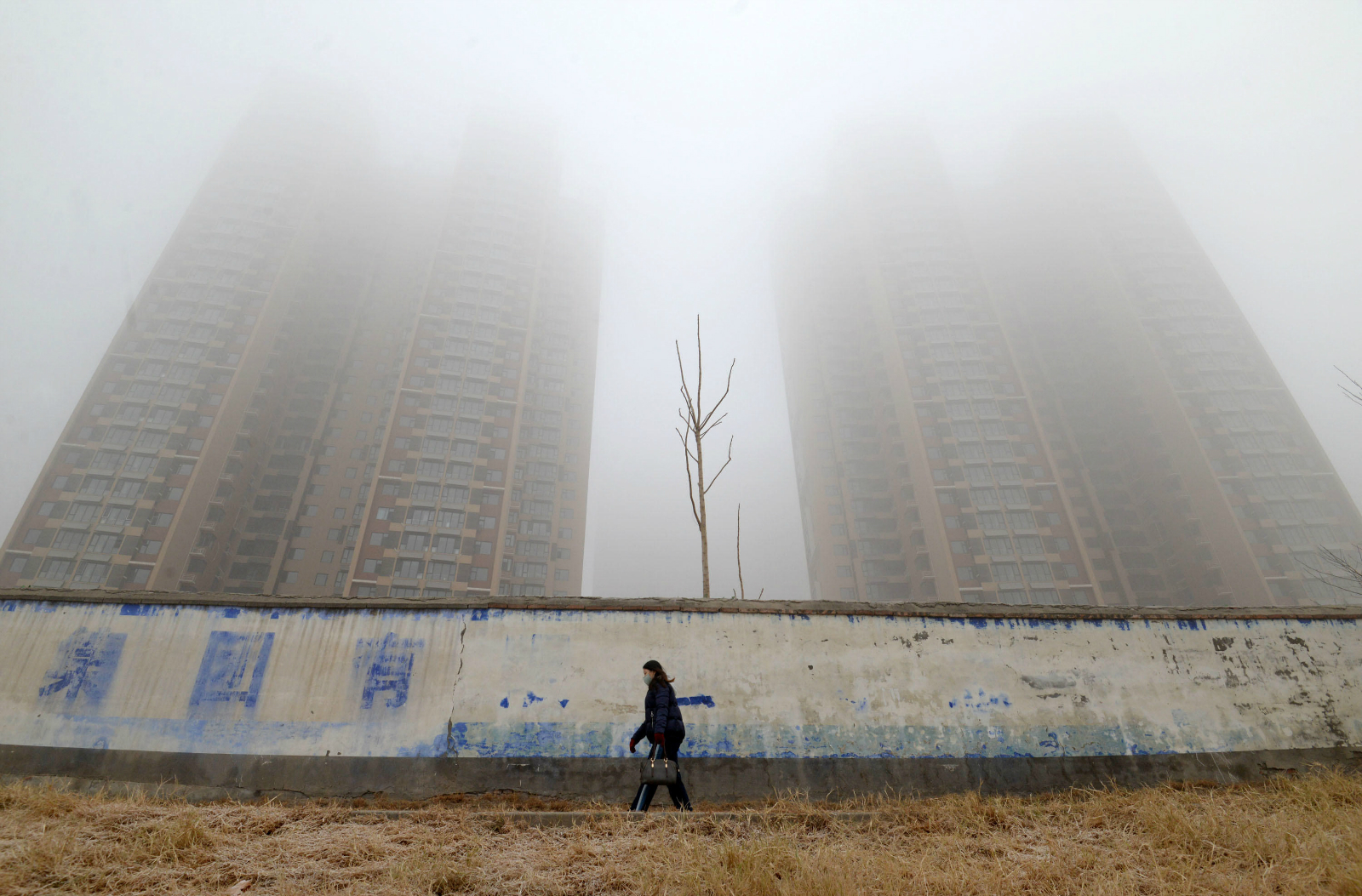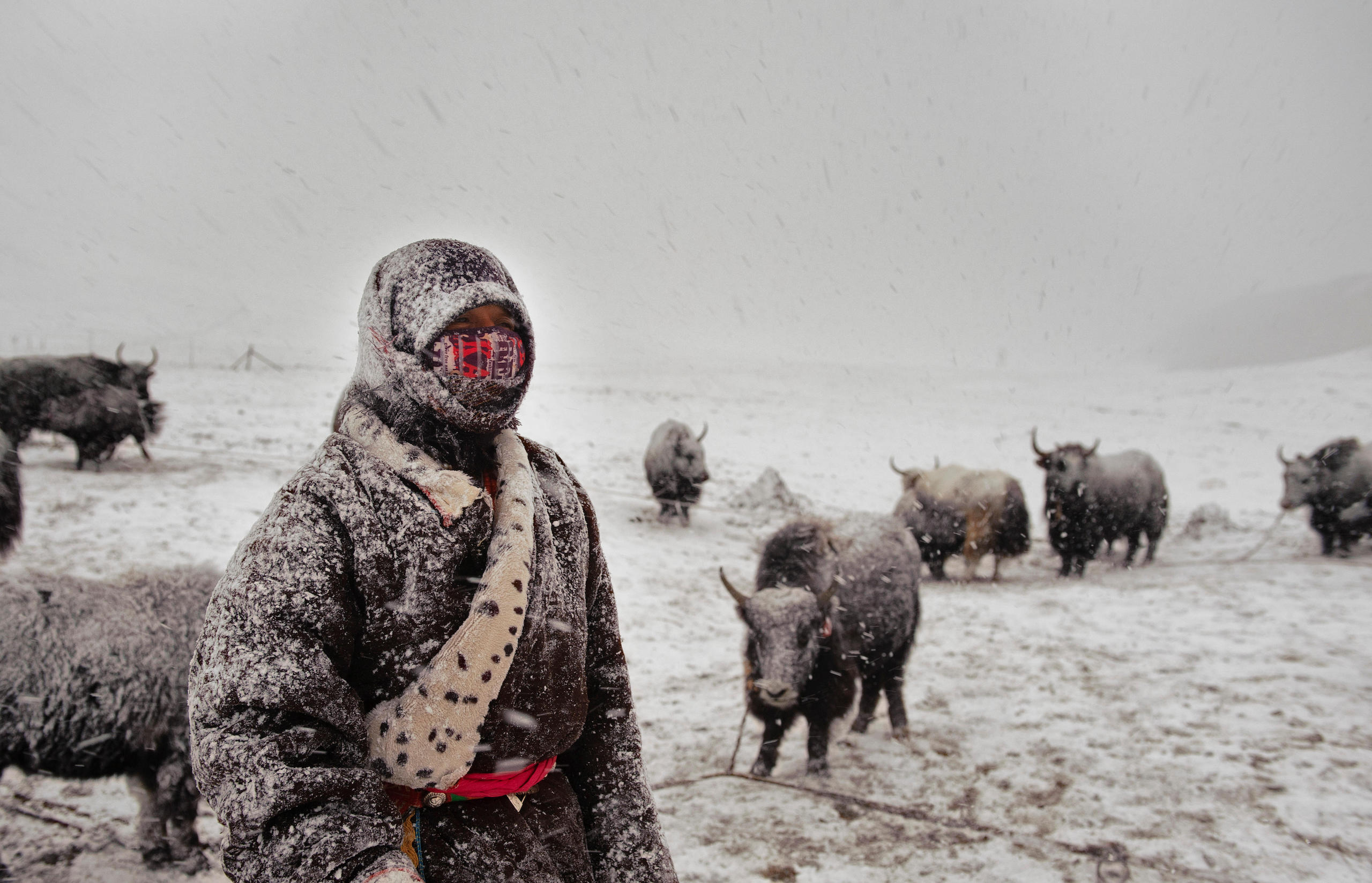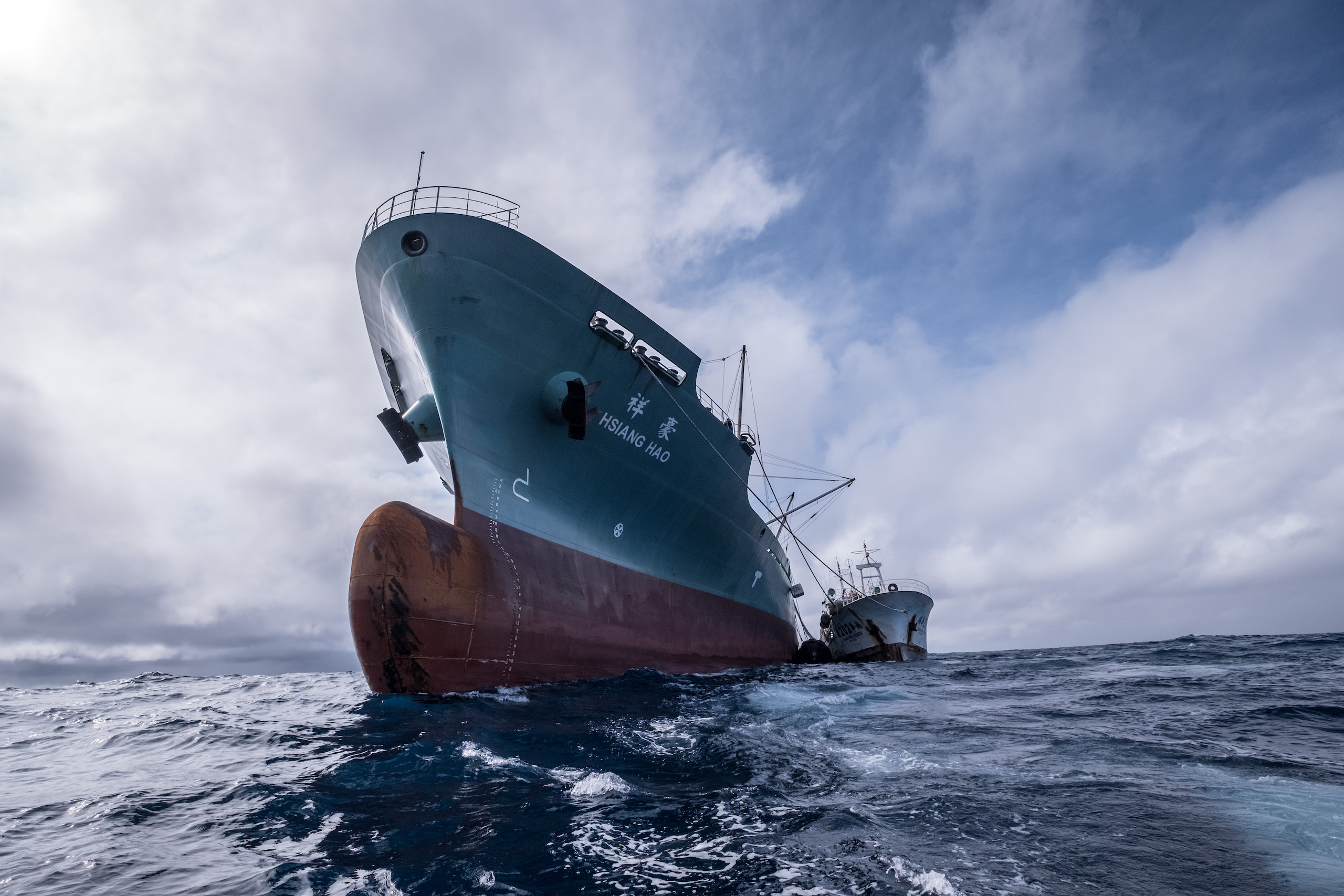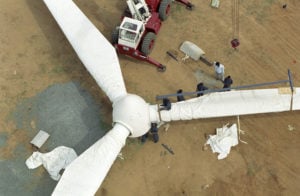Beijing was enveloped in heavy smog for most of this year’s crucial Two Sessions meetings of China’s top legislators. And as the National People’s Congress was approving the outline of the 14th Five Year Plan (FYP), Huang Runqiu, minister of ecology and environment, was in Tangshan leading unannounced inspections of steel mills. Several firms were found to be ignoring emergency pollution-control measures, continuing to work at full capacity, and even faking records. Information has been passed to the police for investigation.
When asked about air quality issues at last year’s ministerial press conference, Huang told reporters that targets for reducing particulate matter PM2.5 pollution in the 13th FYP period (2015-2020) had been met and exceeded: “The people are noticing there are more blue skies and white clouds.” Referring to the ministry’s plans for the 14th FYP, he said there had not yet been fundamental change in China’s industrial structure, energy mix or pollution, and so the next five years would be another, tougher, assault on pollution.

In a January interview with the People’s Daily, Huang said this would involve improving air quality, reducing carbon emissions, protecting and restoring ecosystems, improving aquatic environments, preventing soil pollution, and guarding against the risks of nuclear and other hazardous wastes. Also in January, the ministry said reducing carbon emissions would be the “ring in the bull’s nose”, used to pull other improvements along with it. That approach can be seen as a key part of the environmental and ecological framework for the 14th FYP period.
With this being the first FYP published since China committed to carbon neutrality, climate and energy targets are being watched particularly closely. It is clear that coordinating and synergising environmental protection and climate action will be key.
From pollution-centred to carbon-centred
The 2015 revision of China’s Atmospheric Pollution Law was the first to propose coordinated reduction of pollution and greenhouse gas emissions. The subsequent 13th FYP included a quantified PM2.5 target for the first time, and the next five years saw efforts to tackle air pollution and climate change – winning wide public support for the latter, and making significant progress on both fronts. The 13th FYP period saw PM2.5 levels in the once smog-plagued Beijing-Tianjin-Hebei region drop by 36%. Strong action on pollution brought about huge changes in energy usage, with coal’s proportion in the primary energy mix falling from 63.7% in 2015 to 56.8% in 2020.
That synergy will continue to be emphasised in the coming five years. However, with China having committed to carbon neutrality, cuts in carbon emissions take the lead in this FYP, to in turn bring about reductions in air, water and soil pollution, as well as protection and restoration of ecosystems.
This reflects changes taking place within the Ministry of Ecology and Environment. Formed in 2018, it retained the environmental and ecological responsibilities of the former Ministry of Environmental Protection and took on the National Development and Reform Commission’s role of tackling climate change – bringing pollution and climate under one remit. However, the ministry has lacked the knowledge, capacities and tools for that new role. This January, it announced it would be addressing those problems so it could make better use of synergies between its work on climate change, pollution and environmental protection. This was to involve including language on climate change in the drafting and revision of environmental laws and regulations, combining regulations across the two fields, studying climate impacts during environmental impact assessments, and looking at climate change and peak carbon issues during central-level environmental disciplinary inspections.

The 14th FYP is the first to mention ground-level ozone pollution. The significant reduction in coal use in recent years has caused the amount of sulphur dioxide in China’s air to fall, but ozone levels continue their steady rise and occasionally breach limits. This is because emissions of nitrogen oxides and volatile organic compounds – both chemical precursors of ozone and also of PM2.5 pollution – from transportation and industry remain high. Control of those substances would reduce levels of ozone and PM2.5, as well as cut carbon emissions from industry and transportation.
The ministry also called for better management of poultry farming, water pollution and waste, which would then reduce the release of greenhouse gases such as methane and nitrous oxide. Management of greenhouse gases other than carbon dioxide has also been included in the 14th FYP.
The 14th FYP’s target for air pollution is ambitious: it is to “basically eliminate heavily polluted weather.” That will not be easy. Peng Yingdeng, a researcher with the National Urban Pollution Control Technology Centre, said in an interview with Beijing News that it will require a 70–80% reduction in pollution emissions in northern China. An optimistic date for this happening in the Bejiing-Tianjin-Hebei region would be somewhere between 2030 and 2035 – not 2025, the end of the 14th FYP period – Peng added. A ministry official admitted this will be a long way to go and a source of huge pressure for the ministry.
Conservation in support of carbon reduction
Similarly, synergies between protecting and restoring ecosystems and climate change are now being seen. The ministry has called for attention to be paid to the role nature-based solutions have to play in responding to and mitigating climate change – that is, using the carbon sequestration capacity and ecological services provided by forests, rivers, lakes, grasslands and even farmland. The 14th FYP Outline calls for carbon sequestration by ecosystems to be increased.
That work is placed at the start of chapters on the ecology and the environment, the first two components of which have to do with large-scale geographic interventions. “Improving the system of ecological safety barriers” includes completion of ecological buffers such as the Qinghai-Tibetan plateau and the northern forest shelterbelts; better protection and management of rivers, lakes and wetlands; the protection of forests; land greening; tackling soil loss, desertification and rocky desertification; and restoring grasslands, wetlands and seas. “Building a system of nature reserves” refers to the establishment of national parks and identifying and merging a number of nature reserves and nature parks, creating a three-tier system of natural protected areas, with national parks at the top.

The implementation of these two programs reflects how China is innovating to use its spatial planning system and ecological red lines to protect biodiversity. One joint Chinese and foreign research team has said China is leading the world in these experiments, providing an integrated toolkit for tackling climate change, biodiversity loss and desertification, using synergies and avoiding conflict between differing goals.
The spatial planning system started in 2010 is complex. It sees urban, agricultural and ecological “functional zones” drawn out on the national map with different development-intensity levels designated to them. Within the zones, ecological red lines are used to mark out the areas most in need of the strictest protection, where no infringement is allowed. When those lines are being drawn, agricultural, industrial and residential areas may be avoided, or forced to relocate. This unified approach is designed to prevent conflict between the different functions. It is estimated that when complete, ecological red lines will cover 25% of China’s land, and over 30% of its ocean area. As those areas expand, they can cover entire ecosystems, both protecting biodiversity and, thanks to carbon sequestration by plants, the soil and animals, providing climate benefits. And when ecosystems are well protected, conflict between biodiversity, environmental and climate targets – for example, the destruction of grasslands and wetlands to increase forest coverage, or the felling of natural forests to create carbon sink forests – can be avoided.
Balancing human development and the environment
Consequently, the third and last component of the ecological conservation work, “ecological compensation”, becomes an essential piece of the overall picture. The ecological red lines and reserve system will inevitably result in many people and businesses having to move, along with restrictions on further development – and compensation for this should be paid. The 14th FYP Outline proposes raising the huge funds necessary by increasing the transfer payments paid by central government, creating a market-based system of ecological compensation with private capital participating, as well as establishing a system for realising the value of ecological products, which will see the market price and pay for ecological protection and restoration.
But discussions will continue on whether or not people should have a place in natural reserves. The 14th FYP Outline calls for strict controls on “non-ecological” activities within them, with an orderly removal of residents, agricultural and mining from core areas. Dr Peng Kui, a project officer with the Global Environment Institute, told China Dialogue that in his studies of trials of national parks in the Three Rivers Source area of the Qinghai-Tibet plateau and the Qilian mountains, he found that the core areas were largely pastures for herders, and their removal would incur heavy economic and social costs. “The loss of appropriate human intervention, of fertilisation by livestock, of management, means that removal of residents may actually harm the grasslands. Environmentally friendly businesses should be able to remain.” He also pointed out that excluding all people from the core areas of national parks would mean the loss of their scenic and educational value.

Agriculture and conservation can work together, said Min Qingwen, a member of the National People’s Political Consultative Congress and a researcher with the Chinese Academy of Sciences’ Institute of Geographic Sciences and Natural Resources Research who works on agricultural heritage. “National parks and reserves should respect traditional forms of agriculture and ethnic cultures, in order to protect the environment, develop the economy and pass on culture. This is entirely possible.” Min also thinks the national parks should take Chinese circumstances into account – and population pressure on land is still a fact of life for the country.
Peng Kui told China Dialogue that the vast size of national parks means they take in different legal types of land and require the relocation of residents and businesses, meaning various laws including land and civil laws are involved. This makes legislation hugely complicated and progress has been slower than hoped. The National Parks Law was originally due to be released last year, but is still tied up in internal consultations. He revealed there could be some time to wait before the first national parks are established officially, as the trials have resulted in a consensus that legislation must come first, not retrospectively.
Relocations are also an issue for changes in China’s spatial planning. The 14th FYP Outline expresses support for gradual and orderly resettlement into cities of people currently living in ecological functional zones, but Min says this will be easier said than done and will require cross-departmental cooperation and ongoing research.
The ecological civilisation goes out?
Spatial planning and ecological redlines are an important pillar of China’s ecological civilization. The joint Chinese and foreign research team mentioned above suggested China exports the concept of “ecological redline” to Belt and Road Initiative (BRI) nations, to enable “governments to better site infrastructure investments and manage trade-offs between economic, social and environmental objectives”. Peng Kui, who researches and works on environmental protection in Southeast Asia, said he hopes the COP15 UN biodiversity conference, to be held this year in Kunming, will see the start of that trend. He hopes the government will create mechanisms to support research institutions and NGOs in sharing China’s experiences in biodiversity research and setting and implementing redlines overseas, in a form of “civil diplomacy” that would form an extra pillar of the BRI.
This also fits in with the BRI as described in the 14th FYP Outline: “green, open and honest”, and will boost cooperation with other countries on tackling climate change, ocean governance, wildlife conservation and desertification prevention; cultural and educational exchange on environmental topics; and the creation of a “Green Silk Road”.
The section on the ocean provides another look at how China’s environmental ideas are being extended overseas.
“Harmony between humanity and the ocean, win-win cooperation, and pushing forward with conservation of ocean ecologies,” are mentioned in the section introduction. This compares with the 13th FYP, where the language focused on developing the ocean economy and ocean resources. One notable change in this year’s document is the call for “sustainable distant-water fishing” – the word “sustainable” was missing five years ago.
The first mention of the development of distant-water fishing (DWF) was in 2011’s 12th FYP, and the country’s DWF capacity has increased rapidly ever since, now far outstripping any other country. China’s DWF fleet operates in the waters of 40 countries and regions, and on the high seas of the Pacific, Indian and Atlantic oceans, as well as in Antarctic waters. Illegal, unreported and unregulated (IUU) fishing by Chinese vessels has become a matter of international concern. Last year, China announced its first self-imposed moratorium on some high seas fishing, but how China will make this sector “sustainable” next is anyone’s guess. A 14th FYP document specific to the fishing industry, currently being drafted, will provide more answers.

When it comes to international relations, there has been a shift from “protecting [China’s] ocean rights” in the 13th FYP to a more active “in-depth participation in global ocean governance”, promoting the establishment of a “fair and reasonable international ocean regime” and the development of “blue partnerships” and an “ocean community with a shared future.” According to Liu Nengye, director of the Centre for Environmental Law at Macquarie University, “China used to focus on cooperation with littoral states, but as its capabilities in ocean industries such as ship-making and distant-water fishing have expanded, it has acquired the ability and experience to participate in the setting of international rules. The change in language could be seen as an intensification of the ‘marine world power’ strategy.” On polar governance, the 14th FYP Outline also proposes an “Ice Silk Road” shipping route in the Arctic, alongside increasing capacities to participate in governance and utilisation of the Antarctic. In 2017, China hosted Antarctic Treaty talks for the first time, and in 2018 published a white paper on the Arctic, which Liu regards as landmarks for China’s involvement in polar governance. He says that while there are international calls for protection of the poles, and in particular the Antarctic, China stresses a balance between protection and utilisation, and he sees the language in the 14th FYP Outline as a steady continuation of China’s polar policy.
When it comes to governance of the ocean environment, the 14th FYP Outline calls for more cooperation with other coastal states on monitoring, protection and research, and better study and assessment of strategic deep-sea resources and biodiversity. Meanwhile, at home, China will bolster controls of land-source ocean pollution, with river basins, river mouths and coastal waters to come under unified management with a so-called “land-sea coordination” approach, and the scope of caps on land-source pollutants to be expanded to ensure river water quality. Ultimately, this work needs to be reflected in improvements to coastal environments and ecologies, and in five years the Ministry of Ecology and Environment will assess progress as part of a national “Beautiful Bays” campaign. This will look at water quality, as well as the recovery of marine life and habitats and the protection and restoration of natural coastlines. A 14th FYP specific to ocean environmental protection is being drafted, the first such to be produced. According to the ministry, the Beautiful Bays campaign will feature as a target in that document, with all 1,467 of China’s ocean bays to be certified by 2035. And improving the environment in Chinese waters is also of benefit to the global ocean.
The smog in Beijing’s skies during the Two Sessions was due to clear on the 15th – but on that very day a dozen provinces and municipalities in northern China, including Beijing, were hit by the worst sandstorm in a decade. According to the media, that storm originated in the south of Mongolia and picked up dust from across northern China before hitting Beijing, Tianjin and Hebei. Research has found the vast amount of sand could be associated with the heatwaves and aridity caused by climate change. According to Ming Qingwen, that latest sandstorm shows China cannot stand alone – it must spread its environmental ideas and technology, build regional cooperation, carry out environmental diplomacy, and build “same-boat” partnerships.
Shi Yi, senior researcher with China Dialogue, also contributed to this article.
Correction note: The original version of this article said China published a white paper on the Antarctic in 2018. In fact it was on the Arctic. This has been corrected.









